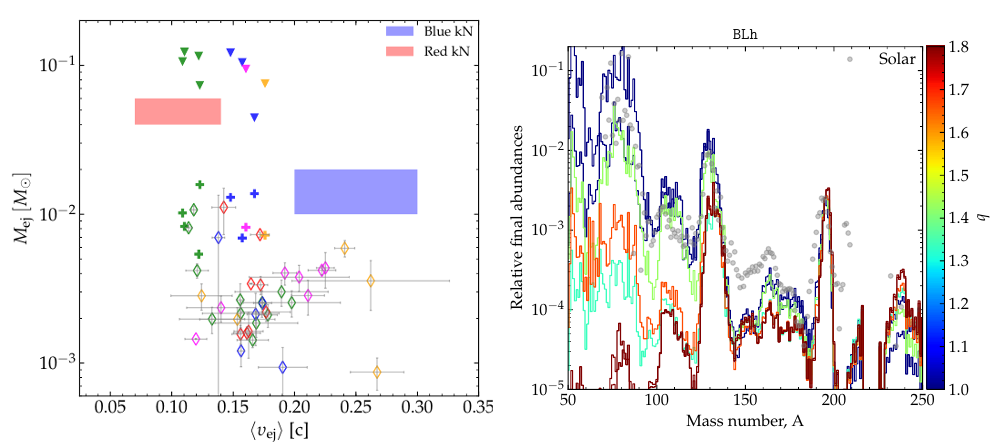Numerical Relativity Simulations of the Neutron Star Merger GW170817: Long-Term Remnant Evolutions, Winds, Remnant Disks, and Nucleosynthesis
In 2008.04333 we present numerical-relativity simulations extendeding up to 100 m using an approximate neutrino transport and a subgrid model for magnetohydrodynamics turbulence. The binaries are targeted to the source of GW170817 and at different mass ratios; the NS matter is described by five microphysical equations of state (EOS). Our study focuses on the spiral-wave wind from the merger remnant and on the nucleosynthesis yields. We find that the total ejecta properties are not compatible with those inferred from AT2017gfo using simple two-components kilonova models, thus suggesting that multi-component kilonova models including disk winds are necessary to interpret AT2017gfo. We also find that the nucleosynthesis in the combined dynamical ejecta and spiral-wave wind in the comparable-mass long-lived mergers robustly accounts for all the r-process peaks, from mass number ~75 to actinides, in terms of solar abundances. Total abundandes are weakly dependent on the EOS, while the mass ratio affect the production of first peak elements. These and our previous simulations form the largest sample of merger remnant simulations with microphysics available to date. They are crucial for the intepretation of multimesseneger signals in present and future observations.
Read more
